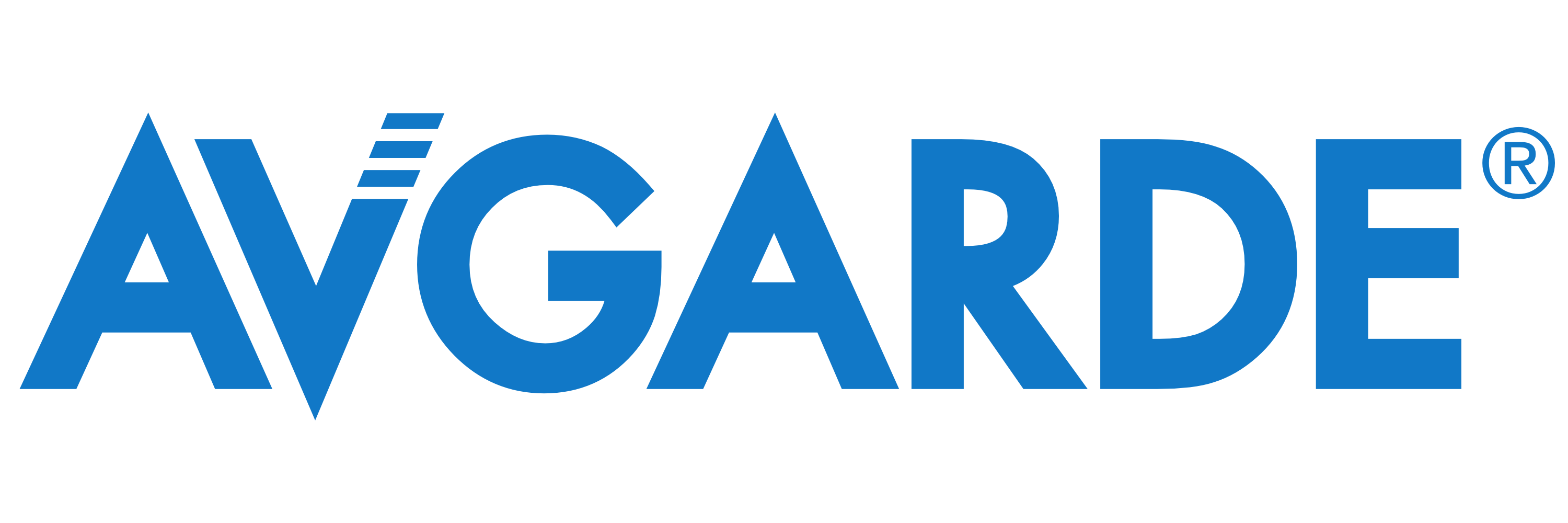More
Top BYOD Security Challenges and How to Prevent Them
Published
1 year agoon


As businesses continue to adapt to the ever-evolving technological landscape, the Bring Your Own Device (BYOD) trend has become an integral part of modern businesses. The ability for employees to use their personal devices for work purposes has increased productivity and flexibility in the workplace. But according to some research, 50% of companies that allowed BYOD experienced a data breach through a personal device. So, it is also essential for organizations to consider BYOD risks to protect their sensitive data. Engage with the professionals at IT Consulting Houston to mitigate the potential risks of BYOD.
In this article, we will delve into the most prominent challenges of BYOD facing organizations today and provide a comprehensive approach to mitigating and preventing them by protecting sensitive corporate data and assets. From device loss and theft to unauthorized access and cloud security, we will explore the various risks associated with BYOD.
Device Loss and Theft
Device loss and theft are one of the most significant security risks associated with Bring Your Own Device (BYOD) policies. With the increasing trend of flexible working arrangements, employees are more likely to carry their personal devices outside the workplace, making them vulnerable to lose or theft. When a device is lost or stolen, the sensitive corporate data stored on it can fall into the wrong hands, potentially leading to data breaches and financial losses.
One of the most effective ways to protect against device loss or theft is device encryption. Encryption ensures that even if a device falls into the wrong hands, the data stored on it will be unreadable without the proper encryption key. As a result, it can prevent unauthorized access to sensitive corporate data and protect the organization from data breaches. Another critical measure is remotely wiping a lost or stolen device. This allows organizations to remotely delete all data stored on a device, preventing unauthorized access to sensitive corporate data.
Malware and Phishing
Malware and phishing attacks are also emerging security challenges in a Bring Your Own Device (BYOD) environment. With the increasing trend of personal devices accessing corporate networks and data, the attack surface of malware and phishing attacks has expanded.
Malware is malicious software that can infect a device, steal sensitive information, or disrupt the device’s regular operation. Phishing attacks, on the other hand, are attempts to trick individuals into providing sensitive information or clicking on a malicious link, often through email or text messages. Both types of attacks can lead to data breaches and financial losses.
Organizations should implement a combination of technical and procedural measures to prevent malware and phishing attacks. One of the most effective ways to protect against malware and phishing is by using mobile device management (MDM) software. MDM software allows organizations to monitor, manage, and secure devices on the corporate network, including setting security policies, remotely wiping devices, and detecting and blocking malware.
Unsecured Wi-Fi Networks
Unsecured Wi-Fi networks are also a significant security challenge associated with Bring Your Own Device policy. With the increasing trend of remote work arrangements, employees tend to use personal devices to access sensitive data, often through unsecured Wi-Fi networks.
Unsecured Wi-Fi networks, such as those found in coffee shops, airports, and hotels, lack proper security measures, making them vulnerable to data breaches and cyber-attacks. Cybercriminals can intercept and steal sensitive corporate data when a personal device is connected to an unsecured Wi-Fi network. Therefore, organizations should implement technical and procedural measures to prevent data breaches on unsecured Wi-Fi networks.
One of the most effective ways to protect against data breaches on unsecured Wi-Fi networks is through virtual private networks (VPNs). A VPN creates an encrypted tunnel between a device and a network, preventing unauthorized access to the data being transmitted. It can protect sensitive corporate data from being intercepted and stolen while on an unsecured Wi-Fi network. Another critical measure is the use of encryption on personal devices. Encryption ensures that even if a device falls into the wrong hands, the data stored on it will be unreadable without the proper encryption key. Again, this can prevent unauthorized access risks to sensitive corporate data, including when connected to an unsecured Wi-Fi network.
Cloud Security
Cloud services have become increasingly popular in recent years as they offer a convenient and cost-effective way for organizations to store and share corporate data. However, as with any technology, cloud services come with security risks.
Storing corporate data in the cloud is one of the potential BYOD security risks for unauthorized access. When data is stored in the cloud, it is accessible to anyone with the proper login credentials, including employees, contractors, and third-party vendors. If these individuals do not have the appropriate access controls, they may inadvertently or maliciously access, modify, or steal sensitive corporate data. To mitigate these risks and ensure corporate data security in the cloud, organizations should implement a combination of technical and procedural measures.
One of the most important measures for cloud security is the use of access controls. Access controls limit who can access, modify, and delete data stored in the cloud. So, organizations should ensure that only authorized personnel have access to sensitive corporate data and that entry is regularly reviewed and revoked when no longer needed. In addition, organizations should also conduct regular security assessments of their cloud service providers, including penetration testing and vulnerability scans, to identify and address any potential vulnerabilities or misconfigurations.
Conclusion
The widespread adoption of Bring Your Own Device (BYOD) policies has created many security challenges for businesses. However, organizations can effectively protect their corporate data and mitigate these risks by implementing a combination of technical measures such as device encryption, mobile device management, virtual private networks and access controls, and regular security assessments. Additionally, employee education and awareness are crucial in preventing security incidents. Organizations need to be proactive in identifying and addressing the risk of BYOD to protect their corporate data and the continuity of business operations.
Post courtesy: Scott Young, President at PennComp LLC.
You may like
-
AutoCrypt Security Fuzzer Expands Vehicle Fuzzing Capabilities Through Major Upgrade
-




Cybersecurity platform Circle Security partners with ForgeRock to Accelerate the Prevention-First Era in Digital Security
-




5G Security Market Will Reach USD 24.89 Billion By 2030, Says P&S Intelligence
-




5 Security Measures to Keep Your Office Safe and Secure
-




Plume Acquires Network and Security Intelligence Specialist Walleye Networks
More
Brand Evolution: The Role of a Strong Community in Today’s Landscape
Published
1 day agoon
April 18, 2024

In the whirlwind of modern business, brand success has shifted beyond marketing muscle and slick products. Today, a brand’s true strength lies in the tapestry it weaves with its community.
This article explores how fostering deep community connections isn’t just a PR win, but a strategic thread in brand evolution, leading to positive societal impact.
Engaging Local Talent: A Win-Win for Brands and Communities
In a time when globalization is the norm, local authenticity and craftsmanship are becoming more and more valued. Employers now have a rare chance to interact with regional artists, craftspeople, and artisans. By doing this, businesses may take advantage of the diverse pool of local talent, giving their goods and services a unique appeal that appeals to the community.
This is more than just a commercial relationship. It’s about creating a supportive network wherein local talent can display their abilities and businesses can become more genuine and establish stronger ties with their target audience. For example, a neighborhood coffee shop that sources its décor from local artists not only enhances the aesthetics of the area but also conveys a compelling narrative to its customers.
Fostering Community Relationships Through Support and Collaboration


Fostering strong relationships with the community through support and collaboration is an essential aspect of modern brand evolution. This approach goes beyond traditional business practices, focusing on creating a symbiotic relationship where both the brand and the community benefit mutually. Engaging in community support and collaboration can take many forms, and each offers unique opportunities for brands to strengthen their ties with the people and organizations around them. One effective way to foster these relationships is through partnerships with local community organizations. Brands can collaborate with schools, non-profits, or local government initiatives to support various projects.
These partnerships might involve sponsoring local events, providing resources for community programs, or even offering expertise and manpower for community development projects. By doing so, brands can play an integral role in addressing local needs, from improving educational facilities to enhancing public spaces, thus directly impacting the quality of life within the community.
Amplifying Brand Image Through Community Endorsements
A happy consumer is a brand’s greatest ambassador. Local communities naturally become brand ambassadors when they gain from a business’s actions, whether it is through partnerships, employment possibilities, or support for neighborhood projects. Positive evaluations and recommendations from neighbors have more weight than any amount of sponsored advertising.
Being involved in the community also makes it easier to communicate real stories. Brands can create content that is not only promotional but also endearing and approachable by sharing stories about their community activities and collaborations. This strategy can greatly improve your branding by gaining consumers’ trust and making it seem more approachable.
Environmental Stewardship: A Commitment to Sustainability


Environmental stewardship is becoming an ever-more-important part of corporate identity in today’s environmentally conscious market. Brands that actively promote environmental sustainability in their communities not only contribute to the creation of a healthy planet but also win over more and more environmentally concerned customers. This commitment can be made in a variety of ways, like by endorsing local environmental projects or integrating energy-saving practices into business processes.
For example, an Indian business might launch or support a campaign to reduce the quantity of plastic waste in surrounding rivers. A business in Australia might start paying more attention to reducing water bills by hiring the best plumbers in Sydney and choosing more affordable resource providers. These programs not only help protect the environment, but also demonstrate the brand’s commitment to sustainability—a quality that consumers are starting to value more and more.
Brands can also participate in educational programs to increase community knowledge of environmental issues. In addition to educating, workshops on energy saving, recycling, and sustainable living techniques foster a sense of camaraderie among participants around common environmental objectives.
Enhancing Digital Engagement and Accessibility in the Community


Improving digital engagement and accessibility is a crucial part of brands’ community involvement roles in today’s digitally-driven society. With technology playing a more and bigger role in daily life, brands are in a great position to close the digital gap and create a more cohesive community. This role is especially important because it fills a critical need in many communities and is in line with current trends. First, companies can fund projects aimed at improving digital accessibility.
This could entail building up community tech hubs where people can access and learn about digital technologies, giving free Wi-Fi in public areas, or supplying technology resources to poor schools. By improving digital access, brands help to ensure that all members of the community, regardless of their economic background, have the opportunity to have their voices heard.
Championing Social Causes and Community Wellbeing
Getting involved in advancing social causes and enhancing community welfare is one of the best ways for brands to make a lasting impression. In today’s socially conscious market, brands are expected to be more than just providers of goods or services; rather, they are seen as vital parts of the communities they serve. Brands can build deeper connections with their customers and the community at large by aligning with social causes and sponsoring them. This engagement can take many forms, such as coordinating or taking part in health awareness campaigns or lending support to regional nonprofits and charities.
For example, to encourage physical fitness and wellbeing, a company could fund neighborhood sports events or collaborate with a nearby health group to offer free health check-ups. Such initiatives not only aid the community but also align the brand with values of health and wellness, which can be particularly appealing to health-conscious consumers.
In conclusion, a brand’s development in the modern world is closely linked to its standing within the community. Developing partnerships, involving local talent, and actively contributing to community welfare are important tactics that can promote mutually beneficial growth for the business and the community. By doing this, brands leave a lasting legacy that transcends financial success in addition to improving their reputation and making significant social contributions. Brands that place a high priority on community involvement are likely to become industry leaders as they negotiate the complexity of contemporary business.


Businesses and individuals are switching to electric vehicles in ever-increasing numbers. Latest figures show there were more than 1 million fully electric cars registered in the UK in February 2024 on top of a further 56,000 electric vans and 620,000 plug-in hybrids.
Now, with a government ban on the sale of all new petrol and diesel cars due to come into force in 2035, more and more businesses and employees will be trading in their polluting fossil-fuel company vehicles for a zero-emissions electric model.
From salary sacrifice schemes to tax benefits, business car insurance specialists, Keith Michaels has weighed up the advantages and disadvantages of driving an electric company vehicle in 2024 and explained what this means for employers and benefit in kind (BiK).
The Pros of EV Company Cars
Owning a company car was once a tax-efficient benefit designed to stimulate the UK car market. That benefit soon became diluted as governments clamped down on benefit-in-kind rules, making company cars less desirable for businesses and employees alike.
The rise in electric cars changed attitudes again thanks to attractive benefit rates for employees and tax deductions for employers aimed at encouraging uptake in EVs, reducing carbon emissions, and helping the government meet its Net Zero target.
With electric vehicle technology constantly improving, it’s no surprise that businesses are now choosing EVs over standard motor options. Not only is this good news for the environment but there’s less maintenance and lower running costs with electric vehicles compared to those powered by combustion engines.
The advantages of EV company cars for both businesses and employees in 2024 include:
Emission-based tax benefits
Businesses may offer employee salary sacrifice schemes in return for an electric company car with zero emissions as it delivers substantial savings through tax benefits. Instead of calculating emissions, tax rates are fixed for all electric company cars, so businesses won’t pay Class 1 National Insurance contributions on the salary given up, but 1A National Insurance on the lower amount of benefit in kind instead.
Unlike other so-called benefits in kind such as mobile phones or health insurance, income tax charges for electric cars aren’t based on foregone wages, but rather a percentage of the car’s list price as defined by HMRC. For fully electric vehicles, the rate is 2% until 2024/25 rising by a further 1% each year until 2027/28 when it will freeze at 5% which remains substantially less than the taxable value of a petrol or diesel car.
VAT savings
Another tax benefit of electric company cars is that employers can recover any VAT incurred for employees who charge vehicles at work or at public charge points. At present, HMRC states that this doesn’t apply to employees who charge their company EV at home, and they are not entitled to recoup any VAT for business use.
Purchase price discounts
Employees who enter an EV salary sacrifice scheme in the workplace can take advantage of potential discounts on the purchase price compared to buying the car outright. Most dealers and manufacturers are crying out for guaranteed buyers for their electric fleets and are likely to entice new customers with significant cost savings and attractive packages.
Zero congestion charges
Any employee driving an electric company car will be exempt from paying congestion charges in the UK where they apply. Similarly, company EV drivers don’t have to pay Clean Air Zone charges which are currently in force in Birmingham, Bristol, Aberdeen, Dundee, Edinburgh, and Glasgow and will soon roll out across other towns and cities. Company EVs are also exempt from London’s ULEZ charges which currently stand at £12.50 per day for vehicles that don’t meet the strict emissions criteria.
The Cons of EV Company Cars
Electric company cars provide many benefits for businesses and employees, but there are also disadvantages to consider. From a reduction in take-home salary to limited vehicle options, the drawbacks to driving a company EV include the following:
Lower take-home salary and pension contributions
While salary sacrifice schemes can be financially beneficial for employees, they also mean a reduction in take-home salary. This is because the cost of the EV is deducted before National Insurance contributions and taxes apply, potentially leaving workers with less money and a smaller budget at the end of each month. Similarly, salary sacrifice schemes can also negatively impact workplace pensions as a reduction in gross salary means lower pension contributions. This could have long-term implications for an employee’s retirement pot and affect their future financial security.
Mortgage and loan challenges
Any reduction in take-home salary resulting from a salary sacrifice scheme could harm an employee’s ability to secure a mortgage and limit their borrowing capacity for loans. Mortgage providers generally base their rules around lending on an employee’s income and monthly expenses. Therefore, a lower take-home salary could be detrimental for employees looking to secure a mortgage or loan or affect the terms of interest they are offered.
Limited electric car selection
Those who enter an electric company car salary sacrifice scheme are unlikely to have an unlimited choice of vehicles. Most employers will have a contract or arrangement with specific manufacturers, giving employees a smaller selection of makes and models of EVs to choose from. Not only that, but some employees may also find they are responsible for the upkeep of their company electric car under the terms and conditions of their salary sacrifice scheme. As a result, the employee could be liable for all servicing, repairs, insurance fees, and ongoing costs which could reduce the financial and tax benefits of a salary sacrifice scheme.
Penalties for early scheme exit
Many EV salary sacrifice schemes offer limited flexibility when employees leave the scheme early or do not meet the pre-agreed terms of the agreement. There are many reasons why this may happen such as workplace changes or new business ownership, but employees are often charged fees or penalties for exiting a scheme early. Also, when an employee changes jobs they may want to transfer their salary sacrifice scheme to their new employer. However, this solely depends on the agreement in place between the employer and the scheme provider and may not always be possible.
Overall, electric company car sacrifice schemes can deliver many benefits for both businesses and employees including tax savings and discounts on purchase prices, lower running and maintenance costs, and zero emission charges. However, EV salary sacrifice schemes can also cause a reduction in take-home salary, penalties for early exits, and limited vehicle choice. Therefore, it is essential to weigh up the pros and cons of any electric company car salary sacrifice scheme to fully understand the obligations and limitations involved with switching from fossil-fuel vehicles to EVs.
More
DeepTech Startup AVGARDE Wins the DRDO Dare to Dream 4.0 Contest for National Level Innovations in Counter Drone Technologies
Published
2 weeks agoon
April 3, 2024

Deeptech startup AVGARDE was declared the winner of the Defence Research and Development Organisation (DRDO) Dare to Dream 4.0 Contest for national level startup innovations in ‘countermeasures for drone and swarm of drones’. Incubated at IISc Bangalore and IIT Guwahati, AVGARDE is building a cutting-edge AI-driven object sensing platform for low-altitude airspace management. Founded in Assam, AVGARDE has offices in Bangalore and Guwahati, with Pan-India operations and associates supporting customers across the country.
The prestigious DRDO Dare to Dream competition provides a unique opportunity for startups and innovators to address key challenges in emerging technologies that can help boost India’s aerospace and defence capabilities, while contributing towards the country’s Science, Technology and Innovation (STI) ecosystem to achieve technological self-reliance.
Manash Bhuyan, Managing Director & Co-Founder of AVGARDE said: “We are honoured and proud to be a winner at DRDO’s coveted innovation contest, Dare to Dream 4.0. This award is a testimony of our globally competitive technology developed by our amazingly talented team. With this recognition, the innovation journey of AVGARDE is further validated as we continue to develop our best-in-class AI-driven airspace management platform for various applications, including drone countermeasures. With the proliferation of drones, the low-altitude airspace is confronted with many potential risks and threats for civilian and military dual-use cases. As we address these new-age challenges, AVGARDE is motivated to develop pioneering indigenous technology and contribute effectively towards a self-reliant India.”
Currently, the AVGARDE DeepSense platform offers three product lines – (1) DroneSafe – an AI-enabled Counter Unmanned Aerial System (C-UAS) to detect, classify, mitigate and report aerial risks/threats from drones, UAVs and other aerial objects; (2) DIWAR – an all-band GPS Jammer for tackling drones and inhibiting its airborne motions; and (3) BirdsEye – an intelligent Bird Detection and Monitoring Radar (BDMR) for dual-use aviation safety and preventing Bird Aircraft Strike Hazard (BASH).
Nilutpal Choudhury, CEO & Co-Founder of AVGARDE said: “This award is a phenomenal milestone for AVGARDE and I have immense admiration and gratitude for our diverse and great team. DRDO’s Dare to Dream is a great platform to validate innovations as it’s a multi-stage screening process with various selection criteria considering aspects of novelty, applicability, implementability, technical merit and maturity. Therefore, it is a great honour to be recognized by DRDO, our country’s esteemed R&D organization for aerospace and defence. Our team is further encouraged to innovate continuously to develop advanced home-grown technologies to fulfill our commitment towards Atmanirbhar Bharat.”
About Avgarde Systems
Avgarde Systems Private Limited (“AVGARDE”) is a radio frequency, wireless technology and artificial intelligence focused deeptech startup building an AI-driven object sensing platform for low-altitude airspace management. With the proliferation of drones, AVGARDE is reimagining wireless technologies to innovate the next generation products for the drone airspace and allied operations, with applications across airports airspace safety, critical infrastructure protection, drone fleet operations, unmanned traffic management, aerospace and defence.
Founded in India as a private limited company, AVGARDE has offices in Bangalore, the world’s fastest growing tech hub, and Guwahati, the gateway to the Northeast – India’s land bridge to Southeast Asia. AVGARDE has incubation and research partnerships with some of India’s top institutions, including Indian Institute of Science (IISc) Bangalore, and Indian Institute of Technology (IIT) Guwahati.
About DRDO – Dare to Dream Innovation Contest
Defence Research & Development Organisation (DRDO) is a premier agency under the Indian Ministry of Defence, which is responsible for the military’s research and development. DRDO technologies have been adopted by the Indian Army, the Indian Navy, the Indian Air Force and others. DRDO also promotes R&D though it’s Technology Development Fund (TDF), which is focused on supporting Micro, Small and Medium Enterprises (MSMEs) and the development of indigenous technologies. To promote startups and innovators, the DRDO Dare to Dream Innovation Contest was launched in honour of Dr. APJ Abdul Kalam, a renowned scientist and former President of India.
The DRDO Dare to Dream Innovation Contest intends to scout and promote individuals and startups for innovations in Defence & Aerospace. With such initiatives, the Defence Research & Development Organisation (DRDO) provides a unique opportunity for startups and innovators to solve some key challenges in emerging technologies that can help boost India’s defence & aerospace capabilities.
Software and analytics company Buyers Edge Platform Accelerates European Expansion with Two Strategic UK Acquisitions
Venture Capital Fund Manager Token Bay Capital Granted In-Principle Approval To Invest In Tokens With First of Its Kind License in Abu Dhabi Global Market (ADGM)


Walmart chooses Swisslog ASRS powered by SynQ software to enhance transparency and delivery of quality products in third milk processing facility
Saad Kassis Mohamed led WeCare Raises $350000 for Lab-Grown Diamonds
UK-based fintech Nuke From Orbit raises £500k pre-seed funding to deliver smarter smartphone security
Japanese Fintech Leader Smartpay, partners with Chubb Insurance to accelerate digitization of the Japanese Insurance Industry, Anticipated to Surge to 80 Trillion Yen (USD $500 Billion) by 2027
Trending
-



 How to7 years ago
How to7 years agoHow to register a Startup in USA
-
Interview5 years ago
An Interview with Joel Arun Sursas, Head of Clinical Affairs at Biorithm, Singapore
-



 More4 years ago
More4 years ago6 Promising Up and Coming Fashion Companies
-



 More6 years ago
More6 years agoFactors to Consider When Planning Your Office Design and Layout
-



 Interview4 years ago
Interview4 years agoAn Interview with Russell Jack, Southland-based Yogapreneur and Mindfulness Teacher
-



 Other Internet Tech6 years ago
Other Internet Tech6 years agoHow to become an IPTV reseller? A beginner’s guide
-



 More6 years ago
More6 years agoIPTV business for beginners
-



 Business Ideas6 years ago
Business Ideas6 years ago50 Small Business ideas with low investment

